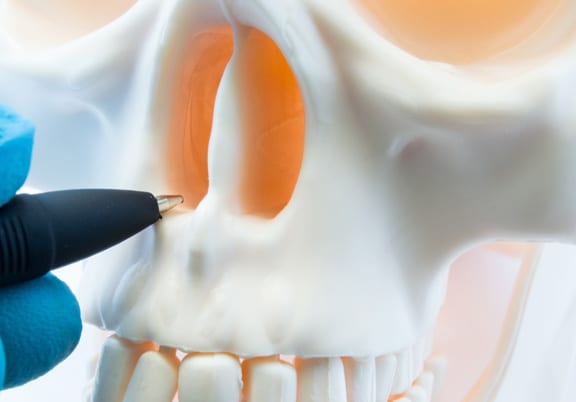
If a wall of cartilage that separates your nostrils (septum) needs to be realigned, the procedure that accomplishes this is called septoplasty.
Surprisingly, it’s not unusual to have a deviated septum. In fact, many people have a nasal septum that’s not perfectly symmetrical without even knowing it. Nasal septum misalignment becomes a problem when it’s contributing to chronic sinus infections or breathing problems.
Why Might Septoplasty Be Recommended?
The main reason for septoplasty is because the nasal septum’s misalignment is causing problems with nasal airflow or contributing to congestion, inflammation, or other types of persistent irritation. Long-term issues with a severely deviated septum may affect your quality of life by forcing you to become a “mouth breather” or making it difficult for you to sleep well. Septoplasty may also be necessary following some type of nose-related trauma, such as a hard impact, collision, or fall, or because of nasal septum abnormalities that were present at birth.


What Happens Before Surgery?
Prior to having septoplasty, you’ll undergo a physical examination of your nose to determine the extent of the misalignment. You may also be asked about what contributed to the problem. Your medical history will likely be considered as well, especially if you have a history of nasal congestion and sinus infections.
Photographs of your nose may be taken for a comparison of before and after results. These images may also be used as reference during surgery. Additionally, you may be advised to stop taking aspirin and other medications that could increase bleeding risks.
How is the Procedure Performed?
A septoplasty procedure can be done with either local or general anesthesia. If you’ll need to be sedated, IV medication is used for this purpose. During surgery, an incision is made on one side of your nose to access the nasal septum. A protective covering called the mucous membrane will need to be lifted so cartilage below it can be repositioned.
The septum will then be placed into a position that allows for sufficient airflow through both nostrils. If there are additional barriers, like pieces of cartilage or bone, they will be removed as well during the procedure. The mucous membrane will then be repositioned so it matches with your realigned nasal septum. Dissolvable stitches are sometimes needed to keep the mucous membrane in place, although nasal packing is usually all that’s needed.
What Happens After Surgery?
Following surgery at Nasal & Sinus Surgery Center, you may be told to avoid blowing your nose for several weeks. You may also be advised to use over-the-counter nasal decongestants to keep your nasal passages clear as tissues heal. It can also be helpful to avoid aerobic exercises and other strenuous activities for about a month or so after surgery.
While results will vary, most patients respond well to septoplasty. After your septum is properly aligned, you’ll likely notice an improved ability to breathe through your nose. Improved nasal respiration may also help with related sleep apnea problems. Some people who’ve had this procedure also opt to have cosmetic surgery if there is a desire to correct irregularities with nose shape that sometimes develop if a septum was severely misaligned.
